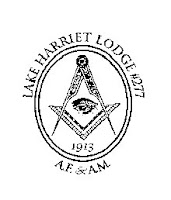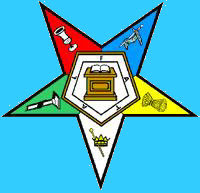Over the past two years I've had intermittent problems with getting the bike to start. Didn't take long to narrow it down to the reverse switch being intermittent. I rarely used the "reverse" function on my bike and after I discovered that using it was causing problems getting the bike started, I used it almost never. Even without using reverse, I still had problems occasionally. Sometimes operating the reverse bar a few times would take care of it, a couple of times it took 10 or 15 minutes of fiddling around. Well, the other day I did use reverse and that was the end of the program...it would NOT start..no neutral light. Jerrie had to push the bike so I could "push-start" it. Push starting a Goldwing is not easy unless you are going down hill!
So anyway...today I attacked it and found that the switch was likely just dirty, because after manually moving it, I found that the neutral light could easily be lit. I removed the switch and cleaned it with lighter fluid. It seems to be working fine now, though I've ordered a new switch just in case. Might as well get one to have on hand while they are still available. It's a special switch and nothing you could fabricate easily.
Access to the switch is not easy, but not difficult. I've read that it could be cleaned without disassembling the bike. And that's probably true, especially if you know what it looks like inside.
However, I wanted some assurance the thing wasn't going to fail in the middle of West Undershirt, North Dakota, so I wanted a good look at it to be assured of solid resolution.
After seeing it all disassembled, I now know that I could do a "workaround in the field" (or repair) if needed using only the onboard Honda tools with the addition of a 1/4" drive 10mm and 12mm socket and a tiny breaker bar. The 10mm is for the acorn nuts holding down the top panel (where the stereo is located). The 12mm helps with the seat grip/backrest. A couple of alligator clips and wire would be all it takes....if the switch actually fails. So I'll be carrying those tools and the new switch with me on the bike. Now that I've done the disassembly, it'll be easier next time (of course).
The disassembly started with removing the seat,
removing the rubber reverse handle cover (and chrome if you have it over the rubber),
loosen the hex head bolt holding the handle on and remove the handle (called out as the "bar" in the parts catalog,
removing the left side normally-removable access panels (2),
removing the 10mm acorn nuts at the bottom of the top panel (stereo),
flip the white lever on the left side in the fuel tank access panel,
remove the ignition panel cover and lift up the stereo enough to allow removal of the large left fairing panel,
remove 2 plastic trim pieces at the left edge of the fairing,
- the top one is easy and the lower one is a little more tricky,
remove the left storage pocket,
on my bike I had to remove the left side air wing.
I think that's about it. Unless you want to remove the CB radio, the panel will have to hang there while you work on the reverse switch.
After you have the fairing panel removed, you can easily see the whole reverse bar assembly and cables, etc. One screw holds the switch and the actuator spring in place. There is an alignment tab on the back of the switch that will ensure the switch is in the proper position.
I need to post some pictures of this stuff. Describing it in text is weak at best.
Before attempting to re-assemble, it's just about necessary to remove the vent covers to make re-assembly and alignment easier. It's fairly easy putting the vent covers back on after assembly is complete.
Total time to disassemble, replace or clean switch and re-assemble is about an hour or 2 max.
Take it easy so you don't break the tabs or bosses on the "tupperware." Don't force it. Look at the service manual diagrams to understand what's holding things in place.
http://www.goldwingdocs.com/ has excellent service diagram info.
The switch runs about $15-20.
I'll ride with the old but newly cleaned switch until it gives me any sign of impending failure. And I'll have the new switch in a few days and will carry it (and all the tools) with me. A field repair won't be bad now that I've been through it once in the shop.
While you've got it apart you may as well check the reverse control cables for proper adjustment and signs of wear.
Now I can use reverse without worrying about getting the bike started. Though, I must say I'm not a big fan of using it for fear of un-neccessary wear on the starter motor. BUT, there are times when it's nice in a tight spot on slippery surface or an incline.
I once used reverse and an old-timer biker walking by stopped and asked me about and could hardly beieve there was such a thing. He walked away shaking his head.
:)
 PRTG Network Monitor
PRTG Network Monitor Lake Harriet Lodge #277 AF & AM
Lake Harriet Lodge #277 AF & AM Scottish Rite Masonry in MN
Scottish Rite Masonry in MN Lake Harriet OES #202 Chapter
Lake Harriet OES #202 Chapter GoldWing Riders group
GoldWing Riders group

No comments:
Post a Comment